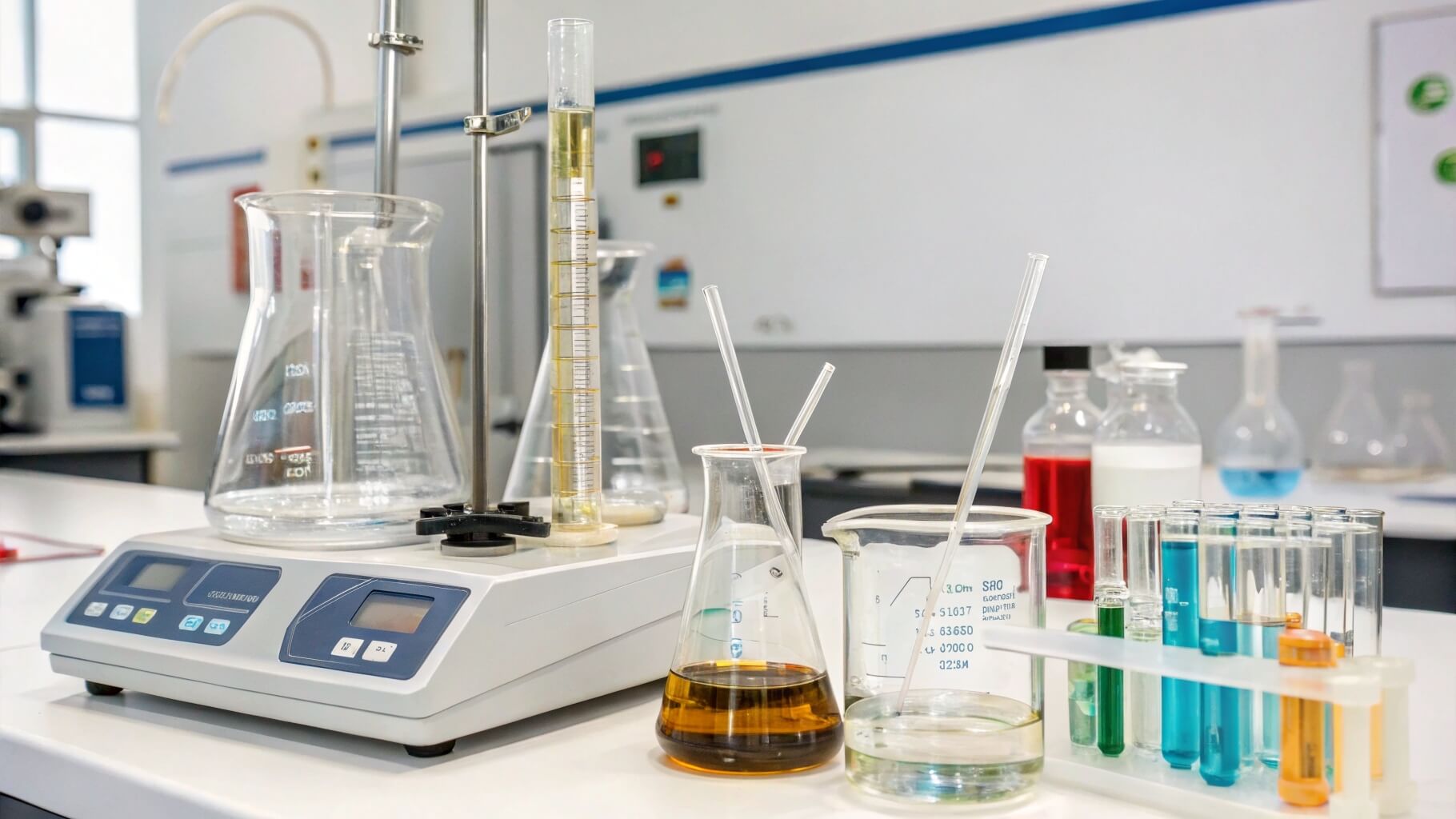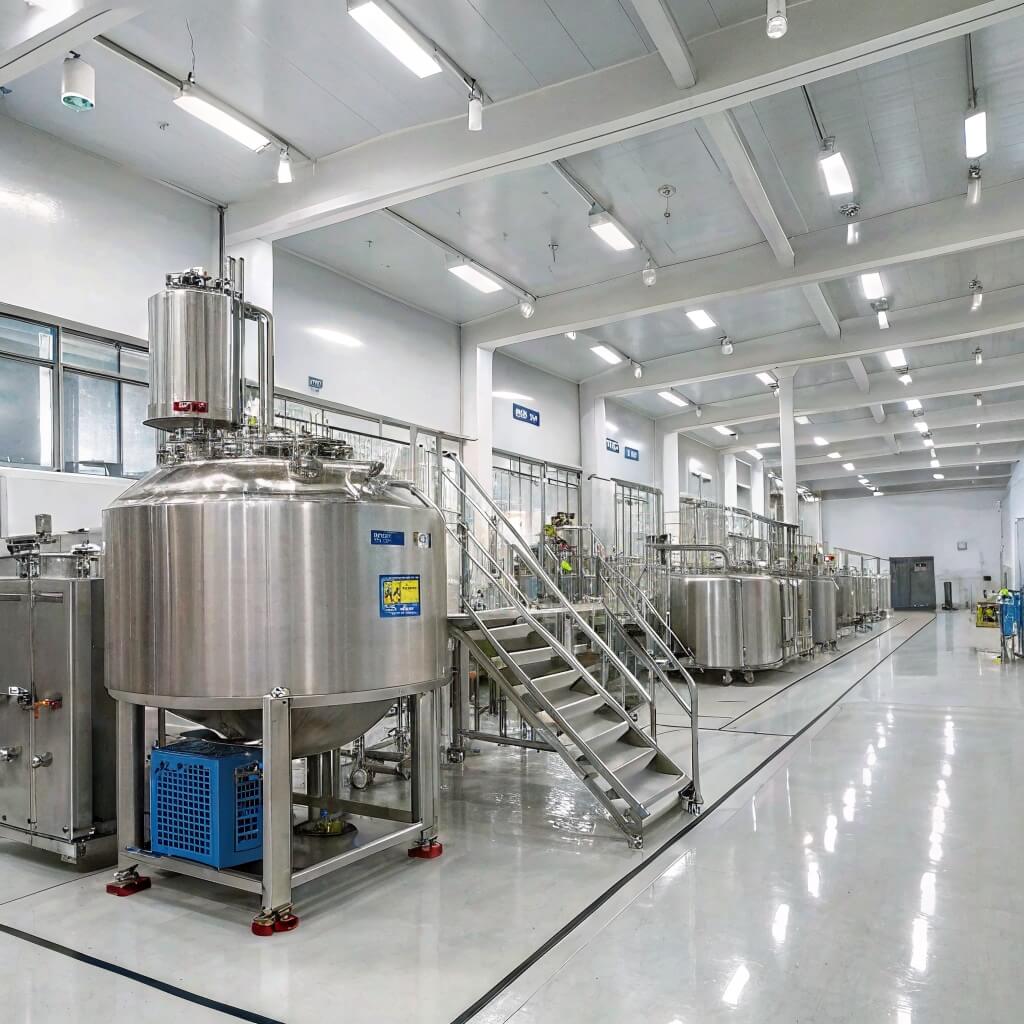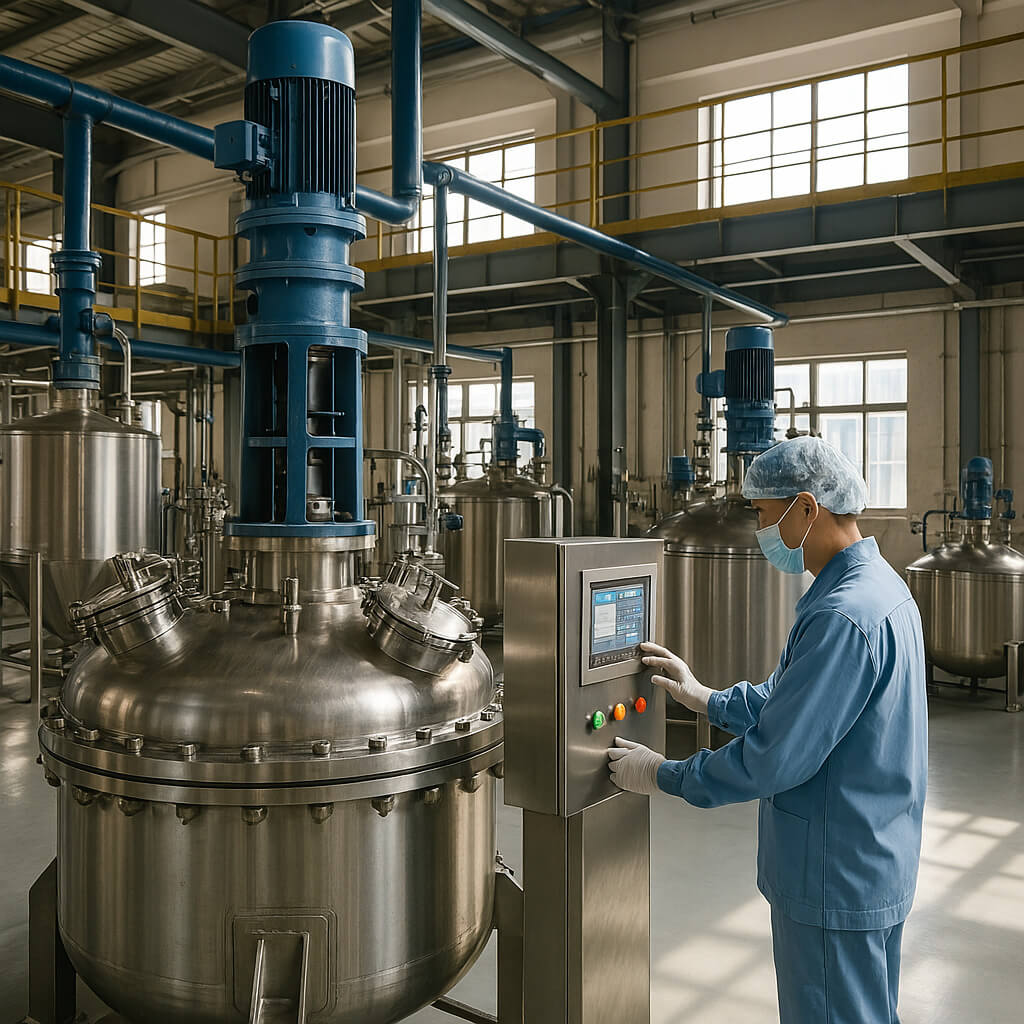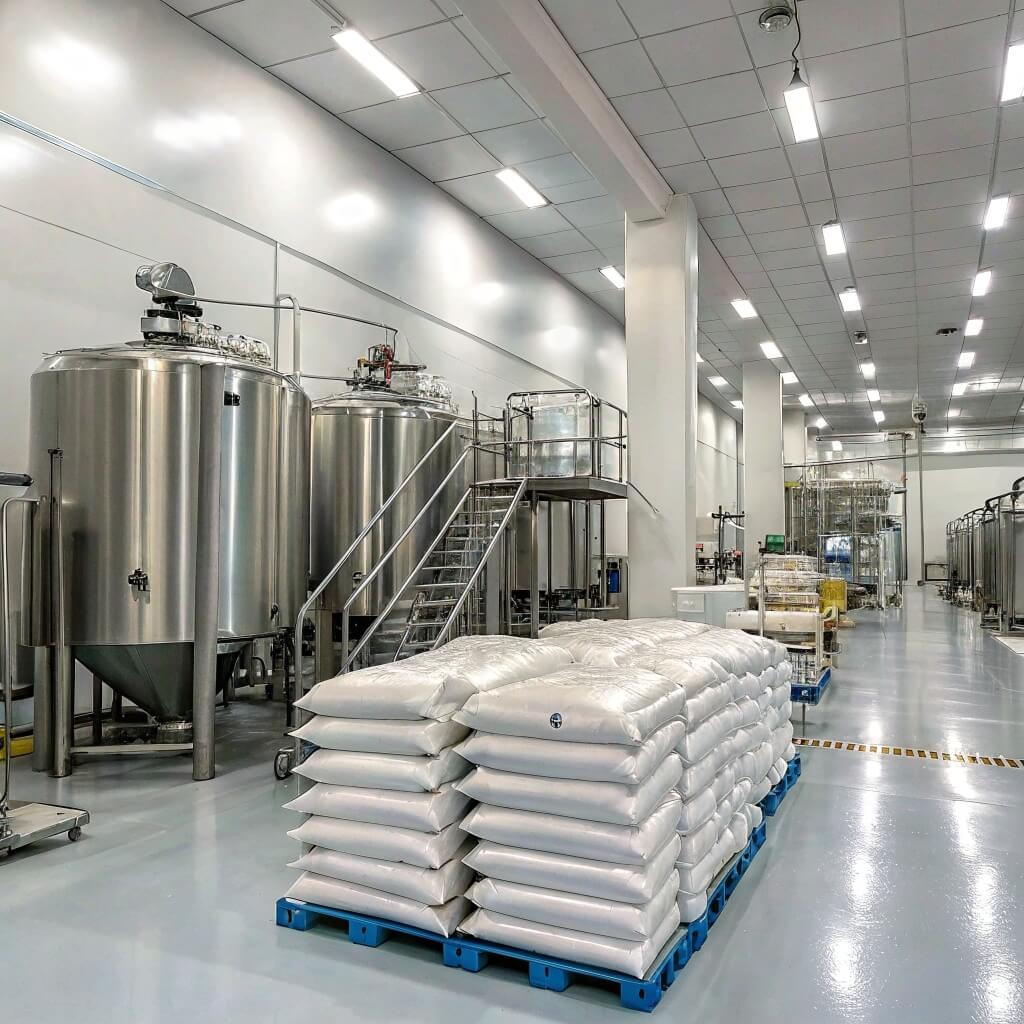L'HPMC E15 è ampiamente utilizzato in pharmaceutical, industrial, and personal care applications, but selecting the right solvent è fondamentale per achieving optimal dissolution, stability, and functionality. Using the wrong solvent can lead to clumping, incomplete hydration, or precipitation, affecting performance.
Water is the primary solvent for HPMC E15, but solubility behavior varies based on temperature, pH, and solvent polarity. Organic solvents like ethanol, methanol, and isopropanol allow only partial dispersion, requiring co-solvents to enhance solubility.

Visual representation of HPMC E15 dissolution in different solvent environments, highlighting water vs. organic solvent behavior.
Per determinare the best solvent for HPMC E15, it is essential to understand its chemical structure, solvent interactions, and the factors influencing solubility. Successivamente, esploreremo what makes a good solvent for HPMC E15 and the role of solvent properties in dissolution.
What Makes a Good Solvent for HPMC E15?
Selezionare il giusto solvent for HPMC E15 is essential to ensure proper dissolution, stability, and functionality in pharmaceutical, industrial, and personal care formulations. If an unsuitable solvent is used, clumping, precipitation, or incomplete hydration can occur, reducing product performance.
A good solvent for HPMC E15 should promote uniform dispersion, allow controlled viscosity, and prevent premature gelation. Water remains the most effective solvent, but solvent polarity, temperature, and pH significantly influence dissolution behavior.
Understanding the Chemical Structure of HPMC E15
HPMC E15 è un etere di cellulosa non ionico modified with gruppi idrossipropilici e metilici, which influence its solubility and gelation properties.
| Componente | Funzione |
|---|---|
| Spina dorsale in cellulosa | Fornisce integrità strutturale ma è naturalmente insolubile in acqua. |
| Gruppi idrossipropilici | Increase water solubility and reduce gelation sensitivity. |
| Methyl Groups | Enhance film-forming and viscosity properties. |
Due to these modifications, HPMC E15 è altamente solubile in acqua but has limited solubility in pure organic solvents.
The Role of Solvent Properties in HPMC Dissolution
- Polarity – HPMC E15 dissolves best in polar protic solvents like water but does not fully dissolve in non-polar solvents.
- Hydrogen Bonding – Strong hydrogen bonding with water enhances hydration and gelation control.
- Dielectric Constant – Higher dielectric constant solvents improve polymer dispersion.
Key Factors Influencing HPMC Solubility: Polarity, Temperature, and pH
- Solvent Polarity – Water is highly polar, allowing complete dissolution, whereas ethanol and acetone are less polar, leading to partial swelling but no full solubility.
- Sensibilità alla temperatura – HPMC E15 disperses in cold water ma richiede gradual heating (40-60°C) for full hydration. In hot water (>70°C), it forms a gel instead of dissolving.
- Stabilità del pH – HPMC E15 è stable between pH 5.0-8.0. Extreme pH levels can alter polymer structure and reduce solubility.
Since solvent properties directly affect HPMC E15’s solubility, the next section will explore whether water is the best solvent and how to optimize its dissolution in aqueous solutions.
Is Water the Best Solvent for HPMC E15?
HPMC E15 è altamente solubile in acqua, rendendolo il most effective solvent[^1] for this polymer. However, its dissolution behavior depends on temperature, mixing method, and hydration time. If not handled properly, issues like clumping, incomplete dissolution, or premature gelation can occur, affecting formulation quality.
[^1]: Exploring the characteristics of effective solvents can help you choose the right one for your polymer applications.
HPMC E15 Water Solubility: Hydration vs. Dissolution
HPMC E15 follows a two-phase dissolution process:
- Hydration – When dispersed in acqua fredda (10-25°C), HPMC particles absorb water and swell without dissolving immediately.
- Dissolution – Once hydrated, gradual heating to Temperatura: 40-60°C allows the polymer chains to fully dissolve, forming a clear or slightly turbid solution.
Effect of Temperature: Why Does HPMC Form a Gel in Hot Water?
- Acqua fredda (10-25°C): Prevents clumping, allowing HPMC particles to disperse evenly.
- Acqua calda (40-60°C): Enhances dissolution after hydration, optimizing viscosity.
- Acqua calda (>70°C): Causes instant gelation, leading to incomplete solubility.
Optimal Conditions for Dissolving HPMC in Aqueous Solutions
- Use cold water (10-25°C) for initial dispersion to prevent aggregation.
- Allow hydration for 15-60 minutes prima di applicare calore.
- Mantenere il pH tra 5,0-8,0 to ensure polymer stability.
- Use moderate stirring (300-600 rpm) to prevent foaming and air entrapment.
Common Challenges When Dissolving HPMC in Water and How to Fix Them
| Problema | Causa | Soluzione |
|---|---|---|
| Agglomerazione | HPMC aggiunto troppo rapidamente all'acqua | Aggiungere lentamente mescolando a velocità moderata. |
| Dissoluzione incompleta | Tempo di idratazione insufficiente | Allow full hydration before applying heat. |
| Formazione del gel troppo precoce | Water temperature too high | Always start with cold water before heating. |
| Schiuma e bolle d'aria | High-speed mixing | Reduce stirring speed and let solution settle. |
Da water remains the best solvent for HPMC E15, understanding how it behaves in organic solvents like ethanol and isopropanol is essential for alternative formulations. Next, we’ll examine HPMC E15 solubility in organic solvents and whether co-solvents can improve its dispersibility.
How Does HPMC E15 Behave in Organic Solvents?
HPMC E15 è altamente solubile in acqua, ma il suo comportamento in organic solvents like ethanol, methanol, and isopropanol is quite different. Unlike in water, where it fully dissolves, HPMC E15 swells or disperses in most organic solvents rather than forming a clear solution. This behavior is important when working with pharmaceutical coatings, adhesives, and industrial formulations where solvent choice affects performance.
Solubility of HPMC in Ethanol, Methanol, and Isopropanol
| Solvente | Comportamento di solubilità |
|---|---|
| Acqua | Fully dissolves, forming a clear or slightly turbid solution. |
| Etanolo (100%) | Si gonfia ma non si dissolve, formando una dispersione. |
| Metanolo | Partial solubility in hydroalcoholic systems. |
| Isopropanolo | Swells without full dissolution; limited compatibility. |
| Acetone | Insolubile; il polimero precipita. |
Partial Dissolution vs. Precipitation in Non-Aqueous Solvents
- In pure ethanol, methanol, and isopropanol, HPMC E15 does not fully dissolve. Instead, it absorbs some solvent, swells, and forms a non-uniform dispersion.
- In high ethanol concentrations (>50%), HPMC E15 may precipitate out due to reduced hydrogen bonding capacity.
- In hydroalcoholic systems (water-ethanol blends), solubility improves but remains dependent on ethanol concentration.
Solvent Compatibility for Pharmaceutical and Industrial Applications
- Pharmaceutical Coatings: L'HPMC E15 viene utilizzato in hydroalcoholic film-coating systems, where ethanol-water blends improve adhesion and drying time.
- Adhesives & Construction: In cement-based formulations, ethanol-based dispersions help modify lavorabilità e forza di adesione.
- Personal Care & Cosmetics: Partial solubility in ethanol makes HPMC E15 useful for lotions, gels, and sprays, where it acts as a thickener.
How Co-Solvents Influence HPMC Dissolution and Dispersibility
- Water-Alcohol Mixtures (50:50) – Improves solubility while maintaining polymer functionality.
- Glycerin & Propylene Glycol – Act as pre-wetting agents, reducing clumping and improving dispersion in alcohol-based systems.
- Surfactants (Tween, Polysorbates) – Help stabilize HPMC dispersions in ethanol-rich solutions.
Da HPMC E15 does not dissolve completely in organic solvents, choosing the right mixing techniques and co-solvent systems è cruciale. Successivamente, esploreremo the best techniques for dissolving HPMC E15 effectively while avoiding common formulation issues.
What Are the Best Techniques for Dissolving HPMC E15?
Dissolvere Motore HPMC E15 correctly ensures viscosità, stabilità e prestazioni ottimali in formulations. If not mixed properly, issues such as agglomerazione, idratazione incompleta o gelificazione prematura can occur. Using the right techniques, pH control, and excipients improves solubility, making the polymer more effective in applicazioni farmaceutiche, industriali e cosmetiche.
Step-by-Step Mixing Process for Achieving Complete Hydration
-
Dispersione in acqua fredda (10-25°C)
- Lentamente spruzzare HPMC E15 in acqua fredda mescolando.
- Evitare di scaricare tutto in una volta prevenire la formazione di grumi.
-
Fase di idratazione (15-60 min)
- Lasciare che il polimero per assorbire l'acqua e gonfiarsi completamente.
- Mescolare delicatamente a moderate speed (300-600 rpm) per una dispersione uniforme.
-
Riscaldamento graduale (40-60°C)
- Una volta idratato, aumentare gradualmente la temperatura per accelerare la dissoluzione.
- Evitare il riscaldamento diretto sopra 70°C, che può causare una gelificazione prematura.
-
Miscelazione finale
- Mescolare continuamente fino a quando la soluzione diventa trasparente o leggermente traslucido.
- Utilizzare un agitatore aereo a velocità moderata per evitare la formazione di schiuma.
Influence of pH and Ionic Strength on HPMC Solubility
- Optimal pH Range: 5.0-8.0 for stable viscosity and complete hydration.
- Al di sotto del pH 5,0: May cause polymer degradation, reducing performance.
- Sopra pH 8,0: Può portare a structural instability, affecting formulation consistency.
- High Ionic Strength: Certain salts and electrolytes can reduce HPMC solubility by affecting hydrogen bonding.
How Surfactants and Polymeric Excipients Improve Dissolution
- Surfactants (Tween, Polysorbates) – Reduce interfacial tension, improving dispersion in mixed-solvent systems.
- Polymeric Excipients (PVP, PEG) – Enhance compatibility, preventing polymer precipitation.
- Co-Solvents (Glycerin, Propylene Glycol) – Act as pre-wetting agents, reducing clumping in hydroalcoholic solutions.
Strategies to Control Viscosity and Thickening Properties
- Higher Concentrations Increase Viscosity – Requires longer hydration time per la completa dissoluzione.
- Stirring Speed Affects Thickness – Over-mixing can lead to excessive aeration, reducing product stability.
- Temperature Control is Essential – Cold water dispersion prevents early gelation, while gentle heating speeds up final hydration.
Using these buone pratiche, i formulatori possono maximize HPMC E15 performance, ensuring smooth dissolution and controlled viscosity. Successivamente, esploreremo how to choose the right solvent based on the intended application to further optimize performance.
How to Choose the Right Solvent for Your Application?
Scegliere il right solvent for HPMC E15 è essenziale per garantire proper dissolution, stability, and performance in different industries. Whether used in pharmaceutical coatings, industrial adhesives, or cosmetic formulations, selecting the correct solvent affects viscosity, film formation, and overall functionality.
Comparing Aqueous vs. Organic Solvent-Based Formulations
| Formulation Type | Solvent System | Solubility & Performance |
|---|---|---|
| Aqueous Solutions | Water-based | Full solubility, stable viscosity, easy handling. |
| Sistemi idroalcolici | Water-ethanol blends | Partial solubility, controlled dispersion, used in coatings. |
| Organic Solvent-Based | Ethanol, methanol, acetone | Swells but does not dissolve completely, requiring co-solvents. |
Water-based formulations fornire full solubility, Mentre hydroalcoholic systems are useful for coatings and controlled-release applications. Organic solvent-based systems may require co-solvents or surfactants per migliorare la dispersione.
Best Solvent Options for Pharmaceutical-Grade HPMC E15
- Acqua – The primary solvent for pharmaceutical applications, ensuring complete hydration and controlled viscosity.
- Ethanol-Water Blends – Utilizzato in film coatings and controlled-release tablets for optimal adhesion.
- Isopropanol & Methanol – Limited solubility but may be used in co-solvent systems for spray coatings.
Solvent Selection for Industrial Applications: Coatings, Adhesives, and Cosmetics
- Construction & Adhesives: Water is preferred, but ethanol or acetone may be used for modified dispersions.
- Cosmetics & Personal Care: Hydroalcoholic systems (water-ethanol blends) improve product stability in lotions and gels.
- Paints & Coatings: Organic solvent blends require co-solvents or emulsifiers to maintain polymer stability.
How to Optimize Solvent Choice Based on HPMC Dissolution Profile
- Identify Application Requirements – Determine if full solubility or controlled dispersion is needed.
- Select the Primary Solvent – Water for complete dissolution, ethanol blends for coatings, organic solvents for specialized applications.
- Use Co-Solvents if Needed – Glycerin, PEG, or surfactants can enhance solubility in non-aqueous systems.
- Test Solubility & Stability – Evaluate viscosity, phase separation, and precipitation behavior in the chosen solvent system.
Selezionando il best solvent for HPMC E15, i formulatori possono achieve consistent performance across pharmaceutical, industrial, and cosmetic applications. Next, we’ll summarize key takeaways and final recommendations for ensuring proper dissolution and stability.
Conclusione
Selezionare il giusto solvent for HPMC E15 è fondamentale per raggiungere optimal dissolution, stability, and performance in various applications. While water remains the best solvent, understanding how HPMC E15 interacts with ethanol, methanol, isopropanol, and co-solvent systems helps formulators enhance its functionality in pharmaceuticals, coatings, adhesives, and cosmetics.
Key Takeaways on HPMC E15 Solubility in Different Solvents
- Fully dissolves in water, forming a clear or slightly turbid solution when properly hydrated.
- Swells but does not dissolve in ethanol, methanol, or isopropanol, requiring co-solvents for dispersion.
- Hydroalcoholic systems (water-ethanol blends) improve solubility for coatings and controlled-release applications.
- Organic solvents (acetone, chloroform) causa precipitation and are unsuitable as primary solvents.
Best Practices for Dissolving HPMC Efficiently
- Start with cold water (10-25°C) to prevent clumping and allow gradual hydration before heating.
- Mantenere il pH tra 5,0-8,0 to ensure stability and prevent polymer degradation.
- Use moderate stirring speeds (300-600 rpm) to avoid excessive foaming.
- In hydroalcoholic systems, blend ethanol below 50% for improved dispersibility.
- Co-solvents like glycerin and PEG enhance solubility in organic solvent-based formulations.
Final Recommendations for Selecting the Optimal Solvent for Your Needs
Per full dissolution and viscosity control, water remains the primary choice. In applications requiring ethanol or other solvents, utilizzando co-solvents, surfactants, or controlled mixing techniques helps achieve better polymer dispersion. Testing solvent compatibility and formulation stability assicura consistent product performance across different industries.
Domande frequenti
Cosa dissolve l'HPMC?
L'HPMC si dissolve in acqua through a hydration and dispersion process. It does not fully dissolve in pure organic solvents like ethanol or acetone but can be dispersed in hydroalcoholic mixtures. Cold water (10-25°C) is the best medium for dispersing HPMC before gradual heating (40-60°C) for complete dissolution.
Qual è la solubilità dell'HPMC E15?
HPMC E15 è altamente solubile in acqua and forms a clear or slightly turbid solution when properly mixed. In organic solvents like ethanol, methanol, and isopropanol, it swells but does not fully dissolve. In hydroalcoholic systems, solubility improves with controlled ethanol ratios, usually below 50% ethanol.
Come si solubilizza l'HPMC?
To properly dissolve HPMC:
- Disperse in cold water (10-25°C) while stirring slowly.
- Allow hydration for 15-60 minutes per evitare la formazione di grumi.
- Riscaldare gradualmente fino a 40-60°C per la completa dissoluzione.
- For hydroalcoholic systems, use co-solvents like glycerin or PEG to enhance solubility.
Qual è la differenza tra HPMC E5 ed E15?
The main difference between HPMC E5 e E15 È viscosità:
- Motore HPMC E5 has a lower viscosity (~5 mPa·s), making it suitable for low-viscosity coatings and fast-dissolving applications.
- Motore HPMC E15 has a higher viscosity (~15 mPa·s), offering better film-forming properties and controlled-release capabilities.
Both grades are used in pharmaceutical, construction, and cosmetic formulations, but the choice depends on desired viscosity and application requirements.




